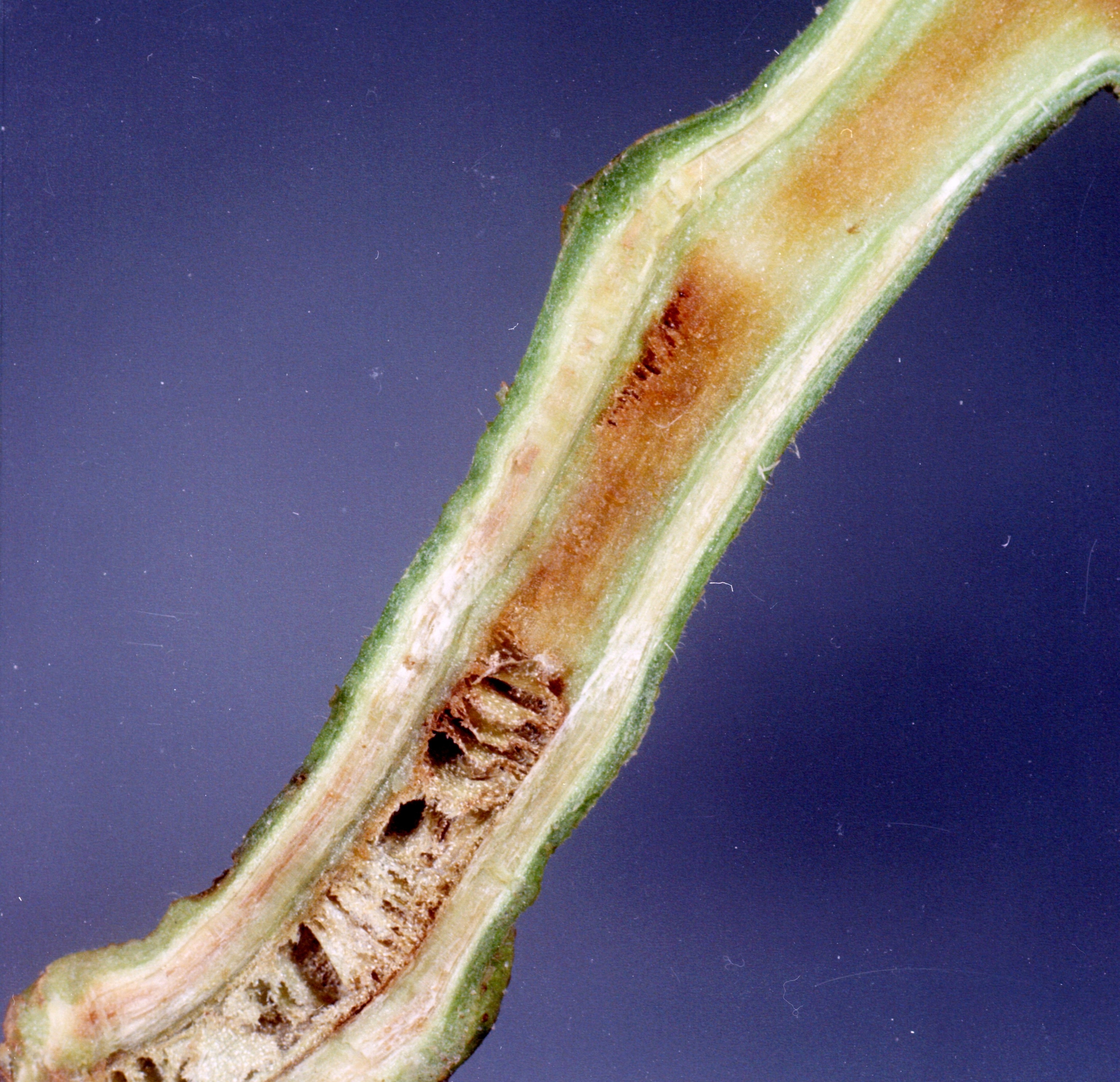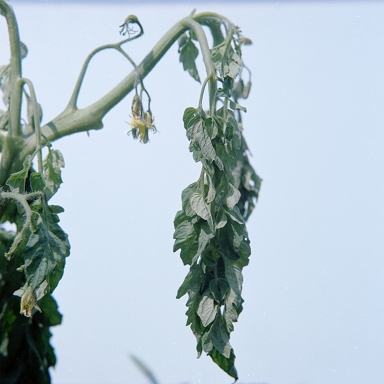|
Ralstonia
''Ralstonia'' is a genus of bacteria, previously included in the genus ''Pseudomonas''. It is named after the American bacteriologist Ericka Ralston. Ericka Ralston was born Ericka Barrett in 1944 in Saratoga, California, and died in 2015 in Sebastopol, California. While in graduate school at the University of California at Berkeley, she identified 20 strains of ''Pseudomonas'' which formed a phenotypical homologous group, and named them ''Pseudomonas pickettii'', after M.J. Pickett in the Department of Bacteriology at the University of California at Los Angeles, from whom she had received the strains. Later, ''P. pickettii'' was transferred to the new genus ''Ralstonia'', along with several other species. She continued her research into bacterial pathogenesis under the name of Ericka Barrett while a professor of microbiology at the University of California at Davis from 1977 until her retirement in 1996. Genomics''Ralstonia'' Genome Projects(froGenomes OnLine DatabaseComparative ... [...More Info...] [...Related Items...] OR: [Wikipedia] [Google] [Baidu] |
Ralstonia Solanacearum
''Ralstonia solanacearum'' is an aerobic non-spore-forming, Gram-negative, plant pathogenic bacterium. ''R. solanacearum'' is soil-borne and motile with a polar flagellar tuft. It colonises the xylem, causing bacterial wilt in a very wide range of potential host plants. It is known as Granville wilt when it occurs in tobacco. Bacterial wilts of tomato, pepper, eggplant, and Irish potato caused by ''R. solanacearum'' were among the first diseases that Erwin Frink Smith proved to be caused by a bacterial pathogen. Because of its devastating lethality, ''R. solanacearum'' is now one of the more intensively studied phytopathogenic bacteria, and bacterial wilt of tomato is a model system for investigating mechanisms of pathogenesis. ''Ralstonia'' was until recently classified as ''Pseudomonas'', with similarity in most aspects, except that it does not produce fluorescent pigment like ''Pseudomonas''. The genomes from different strains vary from 5.5 Mb up to 6 Mb, roughly being 3.5 ... [...More Info...] [...Related Items...] OR: [Wikipedia] [Google] [Baidu] |
Ralstonia Solanacearum Symptoms
''Ralstonia'' is a genus of bacteria, previously included in the genus ''Pseudomonas ''Pseudomonas'' is a genus of Gram-negative, Gammaproteobacteria, belonging to the family Pseudomonadaceae and containing 191 described species. The members of the genus demonstrate a great deal of metabolic diversity and consequently are able t ...''. It is named after the American bacteriologist Ericka Ralston. Ericka Ralston was born Ericka Barrett in 1944 in Saratoga, California, and died in 2015 in Sebastopol, California. While in graduate school at the University of California at Berkeley, she identified 20 strains of ''Pseudomonas'' which formed a phenotypical homologous group, and named them ''Pseudomonas pickettii'', after M.J. Pickett in the Department of Bacteriology at the University of California at Los Angeles, from whom she had received the strains. Later, ''P. pickettii'' was transferred to the new genus ''Ralstonia'', along with several other species. She continued her researc ... [...More Info...] [...Related Items...] OR: [Wikipedia] [Google] [Baidu] |
Ralstonia Pickettii
''Ralstonia pickettii'' is a Gram-negative, rod-shaped, soil bacterium. ''Ralstonia pickettii'' is a Betaproteobacteria species found in moist environments such as soils, rivers, and lakes. It has also been identified in biofilms in plastic water pipes. It is an oligotrophic organism, making it capable of surviving in areas with a very low concentration of nutrients. Several strains have shown an ability to survive in environments highly contaminated with metals. The ability to persist in these harsh conditions makes ''R. pickettii'' a candidate for bioremediation. ''Ralstonia pickettii'' and ''R. insidiosa'' are emerging pathogens in hospital settings. ''R. pickettii'' pathology does not follow an easy definition; although no fully healthy human has ever become ill from it, the bacterium has seriously affected humans with poor health. Several hospitals have reported outbreaks—in particular, patients with cystic fibrosis and Crohn's disease have been shown to be infected wi ... [...More Info...] [...Related Items...] OR: [Wikipedia] [Google] [Baidu] |
Ralstonia Pseudosolanacearum
''Ralstonia pseudosolanacearum'' is a soil-borne bacterium. It is a vascular phytopathogen that infects host plants through the root system causing wilting disease that causes loss in a wide range of crops. ''R. pseudosolanacearum'' is Gram negative and was originally identified as ''Ralstonia solanacearum,'' however, in 2014 Safni et al. proposed a taxonomic revision of the ''Ralstonia solanacearum'' species complex to reclassify phylotype strains, including ''R. pseudosolanacearum'' (''R. solanacearum'' Phylotype I and III)''.'' ''R. pseudosolanacearum'' has been reported in a wide variety of crops including ornamental roses (''Rosa sp.)'', tomato (''Solanum lycopersicum), sweet pepper (Capsicum'' ''annum'') and eggplant (''Solanum melongena).'' Recent studies have found significant differences in disease severity influenced by higher temperatures (28°C) indicating temperature may be a virulence factor upon host colonization. The same study also reported wound inoculation res ... [...More Info...] [...Related Items...] OR: [Wikipedia] [Google] [Baidu] |
Ralstonia Insidiosa
''Ralstonia insidiosa'' is a Gram-negative, environmental bacterium Bacteria (; singular: bacterium) are ubiquitous, mostly free-living organisms often consisting of one biological cell. They constitute a large domain of prokaryotic microorganisms. Typically a few micrometres in length, bacteria were amon .... It has been shown to be a pathogenic in immunocompromised patients in hospital settings. This bacterium is closely related to ''Ralstonia pickettii.'' References External links Type strain of ''Ralstonia insidiosa'' at Bac''Dive'' - the Bacterial Diversity Metadatabase Burkholderiales Bacteria described in 2003 {{betaproteobacteria-stub ... [...More Info...] [...Related Items...] OR: [Wikipedia] [Google] [Baidu] |
Ralstonia Mannitolilytica
''Ralstonia mannitolilytica'' is a Gram-negative soil bacterium. ''Pseudomonas thomasii'' and ''Ralstonia pickettii'' biovar are synonyms.Garrity, George M.; Brenner, Don J.; Krieg, Noel R.; Staley, James T. (eds.) (2005). Bergey's Manual of Systematic Bacteriology, Volume Two: The Proteobacteria, Part C: The Alpha-, Beta-, Delta-, and Epsilonproteobacteria. New York, New York: Springer. .Z. Y. Zong, C. H. Peng''Ralstonia mannitolilytica'' and COPD: a case report In: European Respiratory Journal, Band 38, 2011, S. 1482-1483; doi:10.1183/09031936.00046011, PMID 22130767, Epub 30 November 2011. ''Ralstonia mannitolilytica'' has been implicated as an opportunistic pathogen in hospital-acquired infections, including a 1976 United Kingdom outbreak due to a contaminated distilled water supply, a 1989 outbreak in Taiwan caused by contaminated 0.9% sodium chloride solution, and a 2005 outbreak in children in the United States that was linked to contaminated Vapotherm re ... [...More Info...] [...Related Items...] OR: [Wikipedia] [Google] [Baidu] |
Pseudomonas
''Pseudomonas'' is a genus of Gram-negative, Gammaproteobacteria, belonging to the family Pseudomonadaceae and containing 191 described species. The members of the genus demonstrate a great deal of metabolic diversity and consequently are able to colonize a wide range of niches. Their ease of culture ''in vitro'' and availability of an increasing number of ''Pseudomonas'' strain genome sequences has made the genus an excellent focus for scientific research; the best studied species include '' P. aeruginosa'' in its role as an opportunistic human pathogen, the plant pathogen '' P. syringae'', the soil bacterium '' P. putida'', and the plant growth-promoting ''P. fluorescens, P. lini, P. migulae'', and ''P. graminis''. Because of their widespread occurrence in water and plant seeds such as dicots, the pseudomonads were observed early in the history of microbiology. The generic name ''Pseudomonas'' created for these organisms was defined in rather vague terms by Walter Migula ... [...More Info...] [...Related Items...] OR: [Wikipedia] [Google] [Baidu] |
Ralstonia Syzygii
''Ralstonia syzygii'' is a species of bacteria in the family Burkholderiaceae . This bacterium is the plant pathogen responsible for Sumatra disease that affects the cloves (''Syzygium'') in Indonesia . It is transmitted by Hemiptera insects of the spittle group (superfamily Cercopoidea). This species is classified in the species complex ''Ralstonia solanacearum ''Ralstonia solanacearum'' is an aerobic non-spore-forming, Gram-negative, plant pathogenic bacterium. ''R. solanacearum'' is soil-borne and motile with a polar flagellar tuft. It colonises the xylem, causing bacterial wilt in a very wide rang ...'', which also includes certain Asian strains of ''R. solanacearum'' , a soil bacterium which infects many species of plants, and bacteria from the blood disease of banana (BDB). These three plant pathogenic bacteria are very closely related, despite significant differences biologically, and are grouped in the subgroup phylotype IV species complex'' Ralstonia solanacearu ... [...More Info...] [...Related Items...] OR: [Wikipedia] [Google] [Baidu] |
Burkholderiales
The Burkholderiales are an order of Pseudomonadota.George M. Garrity: ''Bergey's Manual of Systematic Bacteriology''. 2. Auflage. Springer, New York, 2005, Vol. 2: ''The Proteobacteria Part C: The Alpha-, Beta-, Delta-, and Epsilonproteabacteria'' Like all Pseudomonadota, they are Gram-negative. They include several pathogenic bacteria, including species of ''Burkholderia'', '' Bordetella'', and ''Ralstonia''. They also include '' Oxalobacter'' and related genera, which are unusual in using oxalic acid as their source of carbon. Other well-studied genera include ''Alcaligenes'', ''Cupriavidus'', ''Achromobacter'', ''Comamonas'', '' Delftia'', '' Massilia'', ''Duganella'', ''Janthinobacterium'', '' Polynucleobacter'' (important freshwater bacterioplankton), non-pathogenic ''Paraburkholderia'', '' Caballeronia'', '' Polaromonas'', ''Thiomonas'', ''Collimonas'', ''Hydrogenophaga'', '' Sphaerotilus'', '' Variovorax'', ''Acidovorax'', '' Rubrivivax'' and '' Rhodoferax'' (both members o ... [...More Info...] [...Related Items...] OR: [Wikipedia] [Google] [Baidu] |
Bacteria
Bacteria (; singular: bacterium) are ubiquitous, mostly free-living organisms often consisting of one Cell (biology), biological cell. They constitute a large domain (biology), domain of prokaryotic microorganisms. Typically a few micrometres in length, bacteria were among the first life forms to appear on Earth, and are present in most of its habitats. Bacteria inhabit soil, water, Hot spring, acidic hot springs, radioactive waste, and the deep biosphere of Earth's crust. Bacteria are vital in many stages of the nutrient cycle by recycling nutrients such as the nitrogen fixation, fixation of nitrogen from the Earth's atmosphere, atmosphere. The nutrient cycle includes the decomposition of cadaver, dead bodies; bacteria are responsible for the putrefaction stage in this process. In the biological communities surrounding hydrothermal vents and cold seeps, extremophile bacteria provide the nutrients needed to sustain life by converting dissolved compounds, such as hydrogen sulp ... [...More Info...] [...Related Items...] OR: [Wikipedia] [Google] [Baidu] |
United States Department Of Energy
The United States Department of Energy (DOE) is an executive department of the U.S. federal government that oversees U.S. national energy policy and manages the research and development of nuclear power and nuclear weapons in the United States. The DOE oversees the U.S. nuclear weapons program, nuclear reactor production for the United States Navy, energy-related research, and domestic energy production and energy conservation. The DOE was created in 1977 in the aftermath of the 1973 oil crisis. It sponsors more physical science research than any other U.S. federal agency, the majority of which is conducted through its system of National Laboratories. The DOE also directs research in genomics, with the Human Genome Project originating from a DOE initiative. The department is headed by the Secretary of Energy, who reports directly to the president of the United States and is a member of the Cabinet. The current Secretary of Energy is Jennifer Granholm, who has served ... [...More Info...] [...Related Items...] OR: [Wikipedia] [Google] [Baidu] |
Integrated Microbial Genomes System
The Integrated Microbial GenomesIMG system is a genome browsing and annotation platform developed by the U.S. Department of Energy (DOE)- Joint Genome Institute. IMG contains all the draft and complete microbial genomes sequenced by the DOE-JGI integrated with other publicly available genomes (including Archaea, Bacteria, Eukarya, Viruses and Plasmids). IMG provides users a set of tools for comparative analysis of microbial genomes along three dimensions: genes, genomes and functions. Users can select and transfer them in the comparative analysis carts based upon a variety of criteria. IMG also includes a genome annotation pipeline that integrates information from several tools, including KEGG, Pfam, InterPro, and the Gene Ontology, among others. Users can also type or upload their own gene annotations (called MyIMG gene annotations) and the IMG system will allow them to generate Genbank or EMBL format files containing these annotations. In successive releases IMG has expanded ... [...More Info...] [...Related Items...] OR: [Wikipedia] [Google] [Baidu] |



